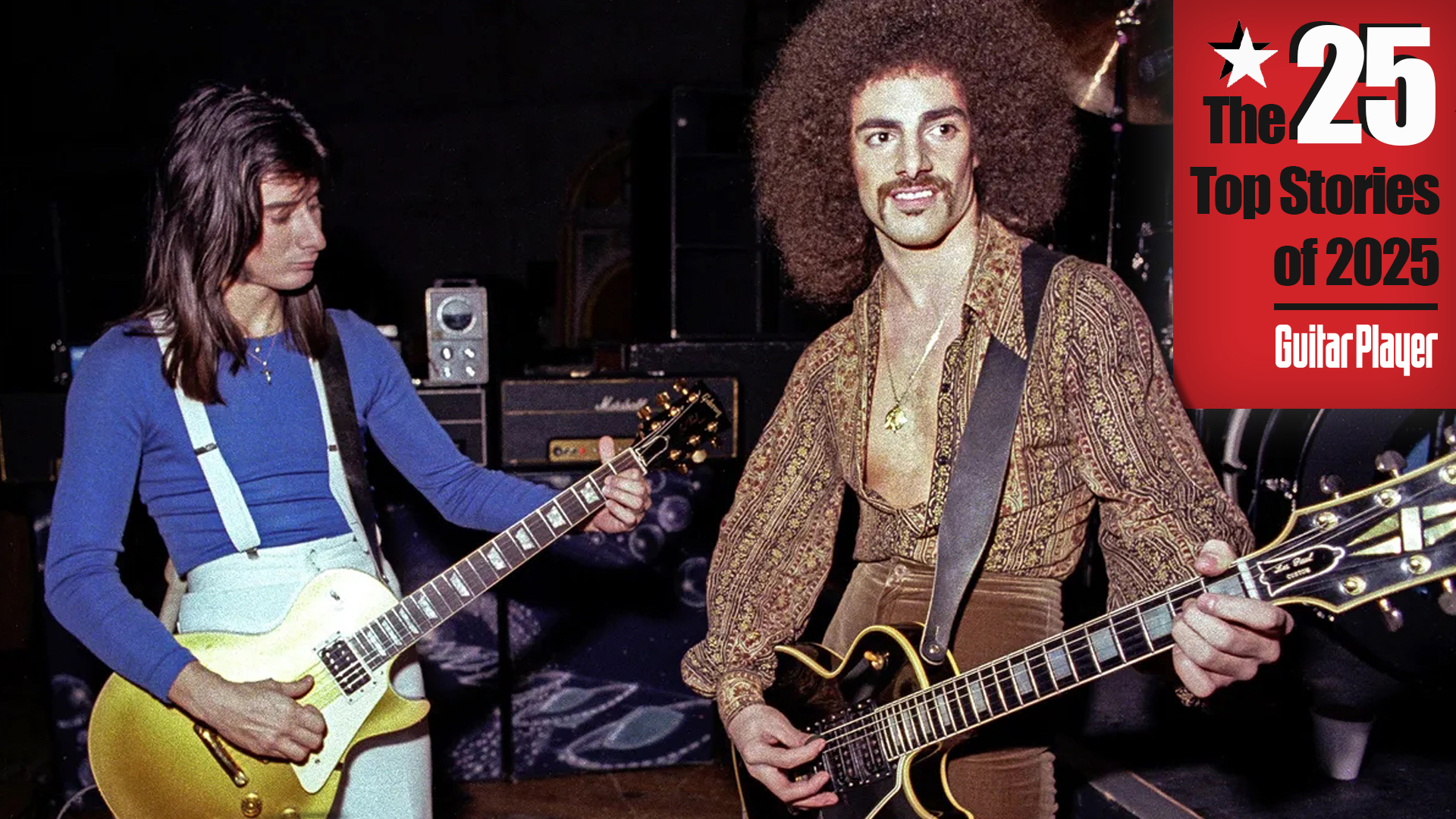“For the solo on Owner of a Lonely Heart, there were two amps facing each other about a foot apart”: How an unorthodox studio setup helped Trevor Rabin re-establish Yes with an improbable #1 hit
Radio-friendly as it was, Owner of a Lonely Heart nonetheless had a one-take solo that was the product of some quirky mic placements

Though they were quite commercially successful in their initial, early-/mid-70s heyday, if you'd told someone during that time that Yes would – a decade or so later – hit the top of the pop charts with a synth-aided smash hit, you'd have probably gotten some strange looks, and not just for the whole ‘I bring a message from the future and this is what I chose to tell you’ thing.
Yet that's exactly what happened in 1983, when Yes reconstituted with electric guitar whiz Trevor Rabin taking the place of Steve Howe. With a wholesale transformation in sound, driven by Rabin's hook-filled, perfect-for-the-era songwriting, the band evolved from high-minded prog kings to a sleek outfit eschewing things like, say, side-length epics. The band's first and only #1 single, Owner of a Lonely Heart, led the charge.
Radio-friendly as that particular song – the riff of which was written on the toilet – obviously was, its quirky guitar solo was nonetheless captured via some unusual mic placements, as Rabin described to GP in a 2009 interview.
For the solo on Owner of a Lonely Heart, Rabin recalled, “there were two amps facing each other about a foot apart, with basic dynamic mics placed right up against the speakers on each amp. One amp had the regular guitar signal going into it, and the other had just the fifth harmony from an MXR Pitch Transposer.
“We added reverb and compression at the board, but otherwise, that’s how we got the sound.”
As Rabin tells it, the solo itself was one of those magical one-take deals.
“When it came to the solo, I said, ‘I want to do something a little weird. I’m gonna add notes a fifth above to harmonize with what I’m playing,’” Rabin recounted to GP earlier this year.
All the latest guitar news, interviews, lessons, reviews, deals and more, direct to your inbox!
“Trevor [Horn, the song's producer] cranked it so loud in the control room, I almost couldn’t play. The minute I finished, I said, ‘Let’s do a couple more.’ But Trevor said, ‘No, no, we’ve got it.’”

Jackson is an Associate Editor at GuitarWorld.com and GuitarPlayer.com. He’s been writing and editing stories about new gear, technique and guitar-driven music both old and new since 2014, and has also written extensively on the same topics for Guitar Player. Elsewhere, his album reviews and essays have appeared in Louder and Unrecorded. Though open to music of all kinds, his greatest love has always been indie, and everything that falls under its massive umbrella. To that end, you can find him on Twitter crowing about whatever great new guitar band you need to drop everything to hear right now.

